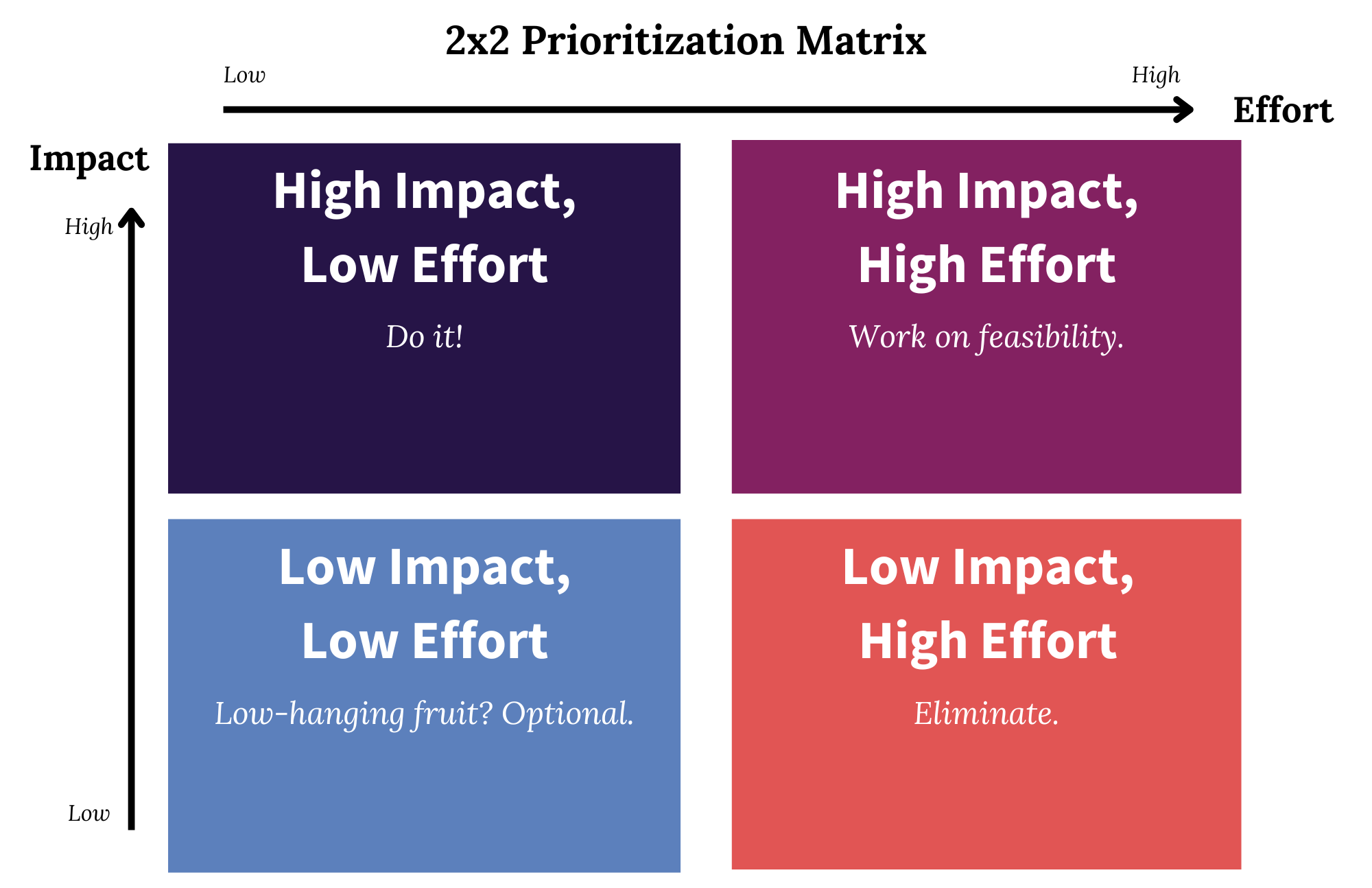The Glorious Little 2x2
The 2×2 Prioritization Matrix is a handy tool when it comes to planning, especially when you have many potential projects (or tactics) and are working with a group of people.
One of my very favorite facilitation tools for prioritizing during a planning process it the highly versatile, unglamourous (but glorious) tool, the 2x2 Prioritization Matrix. If you know me well, you've probably heard me extol my love for the 2x2.
I adore the elegant simplicity of the 2x2 for prioritization, particularly when working with large groups. The 2x2 is self-explanatory, but let me briefly walk you through it anyway. It starts with two key variables. In my planning work, I often use “effort” (or “feasibility”) on one axis and “impact” (or “outcome”) on the other. This results in four distinct categories: high-impact, high-effort; high-impact, low-effort; low-impact, high-effort; and low-impact, low-effort.
When you’re faced with a list of several dozen tactics and need to figure out which ones to pursue (or fund), the 2x2 matrix can be a lifesaver. One of its strengths is that it offers a degree of neutrality. While “effort” and “impact” can be somewhat subjective, you can draw a lot out through thoughtful conversation by asking questions like:
• How long do you think this will take to accomplish?
• Is there a history of support for this type of work from elected officials, community members, or other stakeholders that could make or break its success?
• How expensive would this be?
• How many people would be impacted if successful?
• What’s the likely return on investment?
• Is a particular group disproportionately impacted by this issue? And if so, how significant would the impact be for that group?
The 2x2 matrix also helps balance the tactics you choose. For instance, some high-impact, high-effort tactics might ultimately be the most beneficial, but if they’re slow-moving, the first step should be to make them more feasible. For example, if the tactic would solve world hunger but legislators aren’t on board, the first step could be educating stakeholders and increasing buy-in. On the flip side, starting with low-impact, low-effort tactics (a.k.a. low-hanging fruit) can help generate momentum and motivate others when they see projects getting completed.
I hope this delightful tool inspires you as much as it inspires me and that you find ways to incorporate it into your own work!

